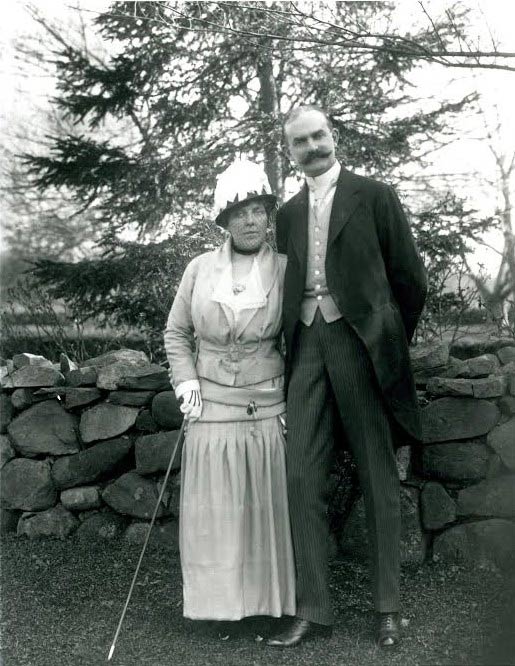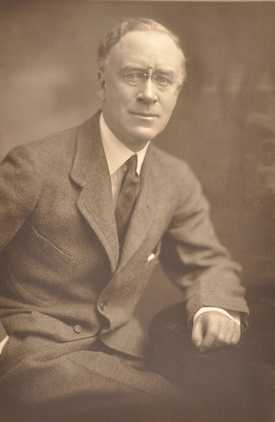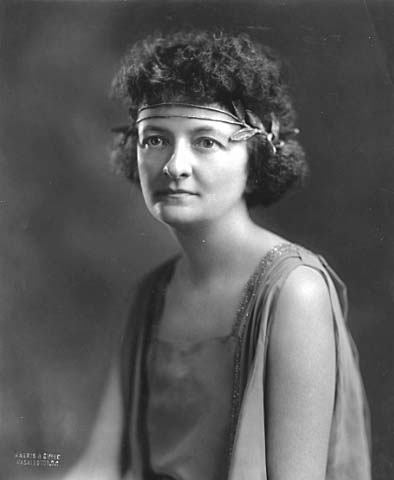Extended Family
Friends
Mary Gordon Dinsmoor (1777-1854)
Mary Gordon was born in Hampstead, New Hampshire to John and Polly Johnson Gordon. She attended Atkinson Academy where she and some of her siblings were taught by her future husband, Silas Dinsmoor. Silas kept in sporadic contact with the Gordon children when he was living in the south and in 1806 he returned to New Hampshire to persuade the twenty-nine year old Mary to become his wife. Her ailing parents were against the move and even her friends thought it would be unwise. They feared the uncivilized nature of the South and that Dinsmoor would not be able to adequately provide for her. Against everyone’s advice, she did marry Silas and in 1808 joined him in the Mississippi Territory with their first child, Silas Gordon. The couple had seven children but only two, Silas G. and Thomas H.W. survived to adulthood. In 1829 the family moved to Cincinnati. Some of Mary’s Johnson cousins were their constant companions in that city and for several years after. Soon after settling in Cincinnati, Silas purchased a small farm along the river in Boone County that included an island, which he called Grape Island. Thomas was still living with them and Silas G. was working in Cincinnati. In 1854 Mary followed her husband and eldest son to the grave. She is buried next to her husband in the Dinsmore family graveyard.
John Wallace Riddle, Jr. (1864-1941)
 John W. Riddle was born in Philadelphia to John W. and Rebecca Blair Wallace. Both his mother’s and his father’s families were prominent in Pennsylvania. He moved with his mother to St. Paul in 1870 and attended local schools until he entered Harvard University. His mother insisted all her children have French-speaking nurses, so after graduating from Columbia Law School, John attended several schools in France where he studied diplomacy and brushed up on more languages. His life was spent as a diplomat, including serving as ambassador to Russia and Argentina. In 1917, he married Theodate Pope (1867-1946), whom he was introduced to by Theodore Roosevelt. Theodate one of the first female architects and a survivor of the Lusitania. John died at his home, Hill-stead House, in Farmington, Connecticut.
John W. Riddle was born in Philadelphia to John W. and Rebecca Blair Wallace. Both his mother’s and his father’s families were prominent in Pennsylvania. He moved with his mother to St. Paul in 1870 and attended local schools until he entered Harvard University. His mother insisted all her children have French-speaking nurses, so after graduating from Columbia Law School, John attended several schools in France where he studied diplomacy and brushed up on more languages. His life was spent as a diplomat, including serving as ambassador to Russia and Argentina. In 1917, he married Theodate Pope (1867-1946), whom he was introduced to by Theodore Roosevelt. Theodate one of the first female architects and a survivor of the Lusitania. John died at his home, Hill-stead House, in Farmington, Connecticut.
William Blair Flandrau (1875-1938)
William Blair McClure Flandrau (Blair) was born in St. Paul, Minnesota, to Charles and Rebecca Blair Flandrau. He followed his older brother, Charles, through local schools. He suffered from living in the shadow of his more academically gifted older brother and half-brother, John Riddle. The source of anguish for his mother and father, Blair was kicked out of Andover Academy and did not graduate from Harvard. Instead he found a job with the Northern Pacific Railroad in Montana--a job furnished him by James Hill, the railroad’s owner, after a request by Charles E. Flandrau. Following his father’s death, Blair decided he wanted his mother to invest in a coffee plantation in Mexico, which was another failure. In 1909, he married Grace Flandrau and the two made a temporary home in St. Paul while they traveled around part of the year. Alcoholism, added to rheumatism, plagued Blair throughout his entire life and contributed to his death in 1838.
Charles Macomb Flandrau (1871-1938)
 1917, MN Historical Society Charles M. Flandrau was born in St. Paul, Minnesota, to Charles and Rebecca Blair Flandrau. He was a half-brother to Patty and Sally Flandrau. He attended local schools when young and graduated from Harvard in 1896. While at Harvard he contributed to the school paper, Advocate, and writing became his lifelong vocation. His best-selling books were Harvard Episodes and Viva Mexico! (click to view in Additional Resources) While his novels were well-received, Flandrau spent much of his professional career as a theater critic for St. Paul newspapers, and he was quite adept at criticizing much more than the theater. He was widely traveled and lived in France for long stretches in the 1920s. Remaining very close to his mother and his dogs, he remained a bachelor. His relationship with his half-sisters was severely strained following the death of his father and the reading of his father’s will. Flandrau died in St. Paul in 1938.
1917, MN Historical Society Charles M. Flandrau was born in St. Paul, Minnesota, to Charles and Rebecca Blair Flandrau. He was a half-brother to Patty and Sally Flandrau. He attended local schools when young and graduated from Harvard in 1896. While at Harvard he contributed to the school paper, Advocate, and writing became his lifelong vocation. His best-selling books were Harvard Episodes and Viva Mexico! (click to view in Additional Resources) While his novels were well-received, Flandrau spent much of his professional career as a theater critic for St. Paul newspapers, and he was quite adept at criticizing much more than the theater. He was widely traveled and lived in France for long stretches in the 1920s. Remaining very close to his mother and his dogs, he remained a bachelor. His relationship with his half-sisters was severely strained following the death of his father and the reading of his father’s will. Flandrau died in St. Paul in 1938.
Grace Hodgson Flandrau (1886-1971)
 Grace Hodgson, the daughter of Edward Hodgson and Anna Redding Hodson (though she was raised by Edward’s wife, Mary Hodgson), was born in St. Paul, Minnesota in 1886. Although some of her schooling was in St. Paul, she also spent several years attending a finishing school in France. Returning to St. Paul in 1909 she married Blair Flandrau and after his own death and that of his brother Charles, Grace inherited the Flandrau wealth. A prolific author of the 1910s, 20s, and 30s, (six books and numerous short stories) she is hardly read at all today, but contemporary readers were often fond of her work and one of her books was even turned into a movie. While her husband struggled with a drinking problem, Grace suffered from bouts of depression. After Blair’s death, she often spent part of her year at Hill-stead House with Theodate Pope Riddle, a place that seemed to cheer her up. Theodate one of the first female architects and a survivor of the Lusitania. She also visited her Flandrau relatives in Tucson, Arizona, where she left a bequest for the University of Arizona’s Flandrau Science Center and Planetarium.
Grace Hodgson, the daughter of Edward Hodgson and Anna Redding Hodson (though she was raised by Edward’s wife, Mary Hodgson), was born in St. Paul, Minnesota in 1886. Although some of her schooling was in St. Paul, she also spent several years attending a finishing school in France. Returning to St. Paul in 1909 she married Blair Flandrau and after his own death and that of his brother Charles, Grace inherited the Flandrau wealth. A prolific author of the 1910s, 20s, and 30s, (six books and numerous short stories) she is hardly read at all today, but contemporary readers were often fond of her work and one of her books was even turned into a movie. While her husband struggled with a drinking problem, Grace suffered from bouts of depression. After Blair’s death, she often spent part of her year at Hill-stead House with Theodate Pope Riddle, a place that seemed to cheer her up. Theodate one of the first female architects and a survivor of the Lusitania. She also visited her Flandrau relatives in Tucson, Arizona, where she left a bequest for the University of Arizona’s Flandrau Science Center and Planetarium.
